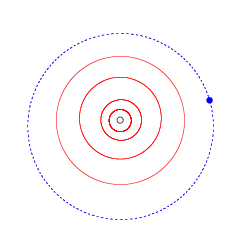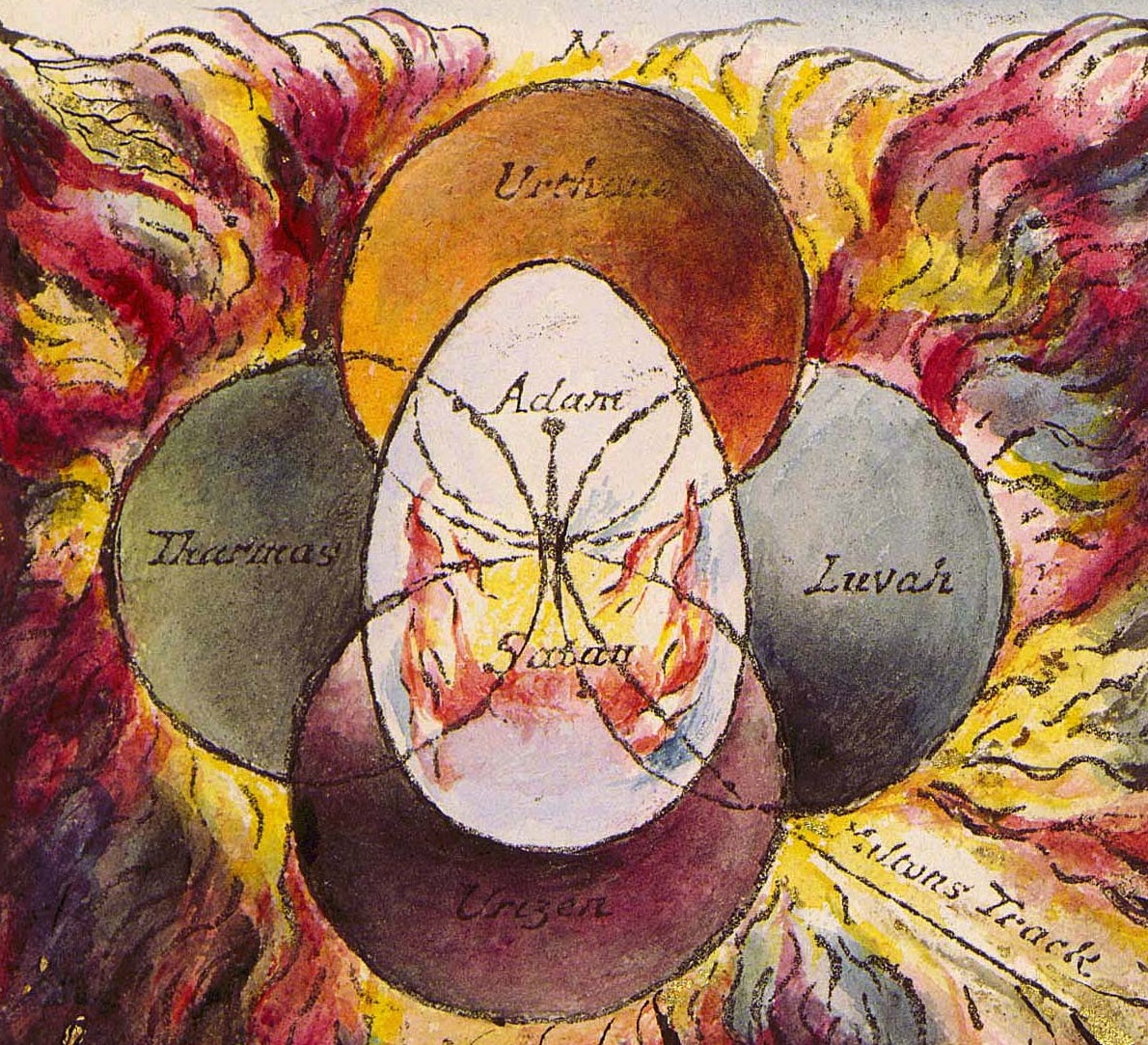|
(15760) 1992 QB1
15760 Albion, provisional designation , was the first trans-Neptunian object to be discovered after Pluto and Charon. Measuring about 108–167 kilometres in diameter, it was discovered in 1992 by David C. Jewitt and Jane X. Luu at the Mauna Kea Observatory, Hawaii. After the discovery, they dubbed the object "Smiley" and it was shortly hailed as the tenth planet by the press. It is a "cold" classical Kuiper belt object and gave rise to the name ''cubewano'' for this kind of object, after the portion of its designation. Decoding its provisional designation, "QB1" reveals that it was the 27th object found in the second half of August of that year. As of January 2018, around 2,400 further objects have been found beyond Neptune, a majority of which are classical Kuiper belt objects. It was named after Albion from William Blake's mythology. Naming This minor planet was named after Albion from the complex mythology of English poet and painter William Blake (1757–1827). Albi ... [...More Info...] [...Related Items...] OR: [Wikipedia] [Google] [Baidu] |
European Southern Observatory
The European Organisation for Astronomical Research in the Southern Hemisphere, commonly referred to as the European Southern Observatory (ESO), is an intergovernmental organization, intergovernmental research organisation made up of 16 member states for ground-based astronomy. Created in 1962, ESO has provided astronomers with state-of-the-art research facilities and access to the southern sky. The organisation employs about 730 staff members and receives annual member state contributions of approximately €162 million. Its observatories are located in northern Chile. ESO has built and operated some of the largest and most technologically advanced telescopes. These include the 3.6 m New Technology Telescope, an early pioneer in the use of active optics, and the Very Large Telescope (VLT), which consists of four individual 8.2 m telescopes and four smaller auxiliary telescopes which can all work together or separately. The Atacama Large Millimeter Array observes the un ... [...More Info...] [...Related Items...] OR: [Wikipedia] [Google] [Baidu] |
Mauna Kea Observatory
The Mauna Kea Observatories (MKO) are a group of independent astronomical research facilities and large telescope observatories that are located at the summit of Mauna Kea on the Big Island of Hawaiʻi, United States. The facilities are located in a 525-acre (212 ha) special land use zone known as the "Astronomy Precinct", which is located within the 11,228-acre (4,544 ha) Mauna Kea Science Reserve. The Astronomy Precinct was established in 1967 and is located on land protected by the Historical Preservation Act for its significance to Hawaiian culture. The presence and continued construction of telescopes is highly controversial due to Mauna Kea's centrality in native Hawaiian religion and culture, as well as for a variety of environmental reasons. The location is near ideal because of its dark skies from lack of light pollution, good astronomical seeing, low humidity, high elevation of , position above most of the water vapor in the atmosphere, clean air, good weath ... [...More Info...] [...Related Items...] OR: [Wikipedia] [Google] [Baidu] |
(15788) 1993 SB
(15788) 1993 SB is a trans-Neptunian object of the plutino class. Apart from Pluto, it was one of the first such objects discovered (beaten by two days by (385185) 1993 RO and by one day by 1993 RP), and the first to have an orbit calculated well enough to receive a number. The discovery was made in 1993 at the La Palma Observatory with the Isaac Newton Telescope. Very little is known about the object. Even the diameter estimate of ~130 km is based on an assumed albedo of 0.09. KBO's found in 1993 include: (15788) 1993 SB, (15789) 1993 SC, (181708) 1993 FW, and (385185) 1993 RO (385185) 1993 RO is a plutino. It was the first plutino discovered after Pluto itself, with 1993 RP and (15788) 1993 SB a day and two days later, respectively. The discovery was made in 1993 at the Mauna Kea Observatory with a 2.2-meter telescop .... Over one thousand bodies were found in a belt between orbiting between about 30-50 AU from the Sun in the twenty years (1992-2012), after finding 199 ... [...More Info...] [...Related Items...] OR: [Wikipedia] [Google] [Baidu] |
Charles Hugh Smiley
Charles Hugh Smiley (September 6, 1903 – July 26, 1977) was an American astronomer and academic, and the author of a column on astronomy, “Planets and Stars” (''Providence Journal'', 1938–1957). The main belt asteroid 1613 Smiley is named after him. He was considered “one of the world’s leading authorities on eclipses.”�D.H. Kelley, “Charles Hugh Smiley, 1903-1977,” ''Journal of the Royal Astronomical Society of Canada'', Vol. 72, p.46./ref> Biography Born in Camden, Missouri, he attended UCLA and UC Berkeley, where he earned a mathematics degree. He received an MA in mathematics from Berkeley (1925) and a PhD from the same university (1927). He taught mathematics at the University of Illinois Urbana-Champaign (1927-9) and worked at the Royal Greenwich Observatory as a Guggenheim Fellow (1929–30). He worked as a professor of mathematics at Brown University from 1930 onwards. He was director of Ladd Observatory and served as chairman of the Department of A ... [...More Info...] [...Related Items...] OR: [Wikipedia] [Google] [Baidu] |
1613 Smiley
Events January–June * January 11 – Workers in a sandpit in the Dauphiné region of France discover the skeleton of what is alleged to be a 30-foot tall man (the remains, it is supposed, of the giant Teutobochus, a legendary Gallic king who fought the Romans). * January 20 – King James I of England successfully mediates the Treaty of Knäred between Denmark and Sweden. * February 14 – Elizabeth, daughter of King James I of England, marries Frederick V, Elector Palatine. * March 3 (February 21 O.S.) – An assembly of the Russian Empire elects Mikhail Romanov Tsar of Russia, ending the Time of Troubles. The House of Romanov will remain a ruling dynasty until 1917. * March 27 – The first English child is born in Canada at Cuper's Cove, Newfoundland to Nicholas Guy. * March 29 – Samuel de Champlain becomes the first unofficial Governor of New France. * April 13 – Samuel Argall captures Algonquian princess Pocahontas in Passapatan ... [...More Info...] [...Related Items...] OR: [Wikipedia] [Google] [Baidu] |
Minor Planet Circulars
The Minor Planet Center (MPC) is the official body for observing and reporting on minor planets under the auspices of the International Astronomical Union (IAU). Founded in 1947, it operates at the Smithsonian Astrophysical Observatory. Function The Minor Planet Center is the official worldwide organization in charge of collecting observational data for minor planets (such as asteroids), calculating their orbits and publishing this information via the '' Minor Planet Circulars''. Under the auspices of the International Astronomical Union (IAU), it operates at the Smithsonian Astrophysical Observatory, which is part of the Center for Astrophysics along with the Harvard College Observatory. The MPC runs a number of free online services for observers to assist them in observing minor planets and comets. The complete catalogue of minor planet orbits (sometimes referred to as the "Minor Planet Catalogue") may also be freely downloaded. In addition to astrometric data, the MPC collect ... [...More Info...] [...Related Items...] OR: [Wikipedia] [Google] [Baidu] |
Minor Planet Center
The Minor Planet Center (MPC) is the official body for observing and reporting on minor planets under the auspices of the International Astronomical Union (IAU). Founded in 1947, it operates at the Smithsonian Astrophysical Observatory. Function The Minor Planet Center is the official worldwide organization in charge of collecting observational data for minor planets (such as asteroids), calculating their orbits and publishing this information via the '' Minor Planet Circulars''. Under the auspices of the International Astronomical Union (IAU), it operates at the Smithsonian Astrophysical Observatory, which is part of the Center for Astrophysics along with the Harvard College Observatory. The MPC runs a number of free online services for observers to assist them in observing minor planets and comets. The complete catalogue of minor planet orbits (sometimes referred to as the "Minor Planet Catalogue") may also be freely downloaded. In addition to astrometric data, the MPC collect ... [...More Info...] [...Related Items...] OR: [Wikipedia] [Google] [Baidu] |
Vala, Or The Four Zoas
''Vala, or The Four Zoas'' is one of the uncompleted prophetic books by the English poet William Blake, begun in 1797. The eponymous main characters of the book are the Four Zoas (Urthona, Urizen, Luvah and Tharmas), who were created by the fall of Albion in Blake's mythology. It consists of nine books, referred to as "nights". These outline the interactions of the Zoas, their fallen forms and their Emanations. Blake intended the book to be a summation of his mythic universe but, dissatisfied, he abandoned the effort in 1807, leaving the poem in a rough draft and its engraving unfinished. The text of the poem was first published, with only a small portion of the accompanying illustrations, in 1893, by the Irish poet W. B. Yeats and his collaborator, the English writer and poet Edwin John Ellis, in their three-volume book '' The Works of William Blake''. Background Blake began working on ''Vala, or The Death and Judgement of the Eternal Man: A Dream of Nine Nights'' while he wa ... [...More Info...] [...Related Items...] OR: [Wikipedia] [Google] [Baidu] |
Minor Planet
According to the International Astronomical Union (IAU), a minor planet is an astronomical object in direct orbit around the Sun that is exclusively classified as neither a planet nor a comet. Before 2006, the IAU officially used the term ''minor planet'', but that year's meeting reclassified minor planets and comets into dwarf planets and small Solar System bodies (SSSBs).Press release, IAU 2006 General Assembly: Result of the IAU Resolution votes International Astronomical Union, August 24, 2006. Accessed May 5, 2008. Minor planets include asteroids ( |
IAU Minor Planet Center
The Minor Planet Center (MPC) is the official body for observing and reporting on minor planets under the auspices of the International Astronomical Union (IAU). Founded in 1947, it operates at the Smithsonian Astrophysical Observatory. Function The Minor Planet Center is the official worldwide organization in charge of collecting observational data for minor planets (such as asteroids), calculating their orbits and publishing this information via the '' Minor Planet Circulars''. Under the auspices of the International Astronomical Union (IAU), it operates at the Smithsonian Astrophysical Observatory, which is part of the Center for Astrophysics along with the Harvard College Observatory. The MPC runs a number of free online services for observers to assist them in observing minor planets and comets. The complete catalogue of minor planet orbits (sometimes referred to as the "Minor Planet Catalogue") may also be freely downloaded. In addition to astrometric data, the MPC collect ... [...More Info...] [...Related Items...] OR: [Wikipedia] [Google] [Baidu] |
William Blake's Mythology
The prophetic books of the English poet and artist William Blake contain an invented mythology, in which Blake worked to encode his spiritual and political ideas into a prophecy for a new age. This desire to recreate the cosmos is the heart of his work and his psychology. His myths often described the struggle between enlightenment and free love on the one hand, and restrictive education and morals on the other. Sources Among Blake's inspirations were John Milton's ''Paradise Lost'' and ''Paradise Regained'', the visions of Emanuel Swedenborg and the near-cabalistic writings of Jakob Böhme. Blake also included his own interpretations of druidism and paganism. The Fall of Albion The longest elaboration of this private myth-cycle was also his longest poem, '' The Four Zoas: The Death and Judgment of Albion The Ancient Man'', written in the late 1790s but left in manuscript form at the time of his death. In this work, Blake traces the fall of Albion, who was "originally fourfold b ... [...More Info...] [...Related Items...] OR: [Wikipedia] [Google] [Baidu] |




